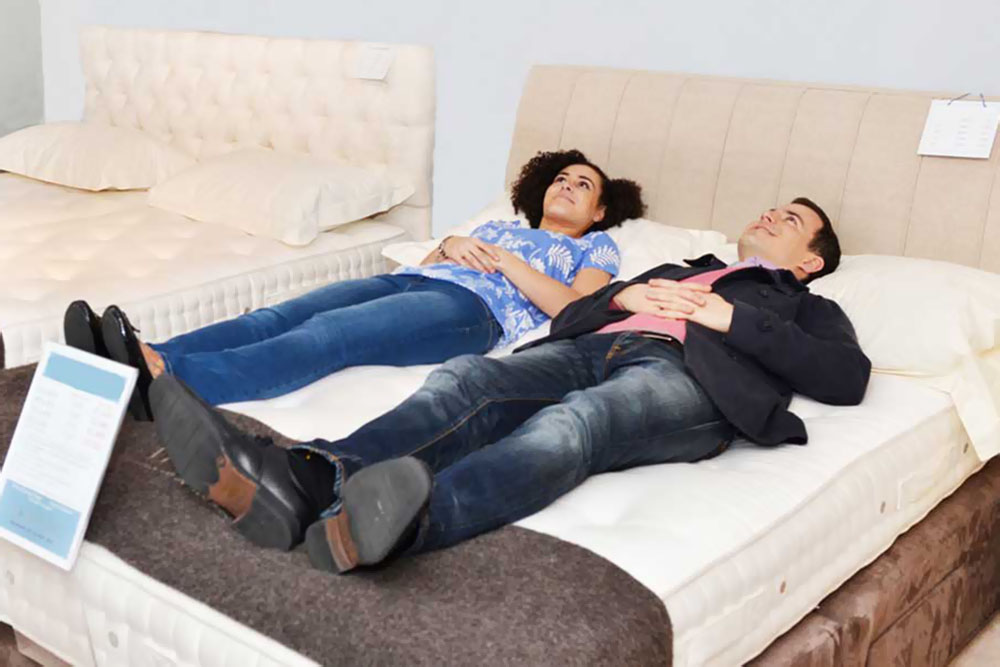
Most of us don’t give our mattress a second thought, but we should. The ideal mattress is a perfect combination of firmness, materials and size, (both area and thickness), with each playing an important role in our sleep experience.
In this guide we’re going to focus in on mattress sizes and provide everything you need to know about them. Hopefully, this will help you choose the right size mattress when the time comes. Let’s get to it.
First Things First
Before we get into the details it’s important to establish the basics of sizing terminology.
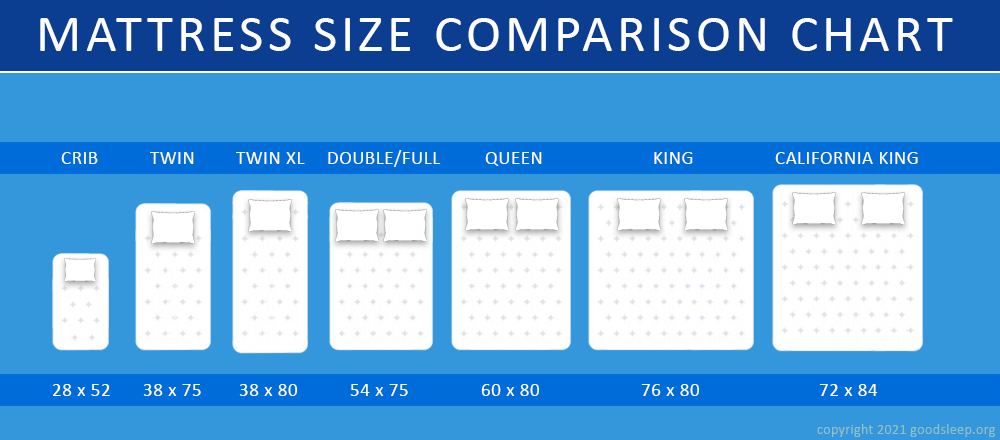
As you can see when shopping for a new mattress you’ll be faced with no fewer than 7 distinct standard sizes. While “Crib” is pretty self-explanatory, the rest can leave people scratching their heads. For instance, since “Twin” indicates 2 and “Double” also implies 2, why are they different? In this guide we’ll try and clarify the situation. So, let’s get to it.
Mattress Size Details
The Crib Mattress
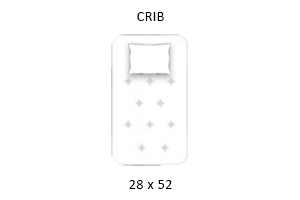
The Crib mattress may be the only one whose name says it all. This is a mattress specifically designed to fit snugly into a standard size crib. In most cases kids will stay in a crib until they’re about 18 months old, at which time they’ll graduate to a more or less regular bed.
As a general rule you want the crib mattress to be quite firm. This is to prevent the child’s face from sinking into the mattress, increasing the risk that they might suffocate or fall victim to SIDS.
The Twin Mattress
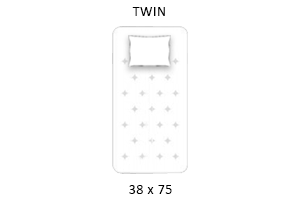
The Twin mattress is not made to accommodate twins. It got this name because beds this size were commonly paired together in kids’ rooms or guest rooms, either in homes or hotels. This is the smallest mattress any self-respecting adult will buy for themselves.
You could squeeze two adults onto a twin mattress as long as they’re really fond of each other, but even then one or both parties will eventually start pining for something bigger. Truth be told, the twin is really a mattress for kids and adolescents.
The Twin XL Mattress

The Twin XL mattress came about as a way to accommodate taller people who don’t mind sleeping on a narrow mattress. It provides an extra 5 inches of length, so if you’re 6 feet tall your feet won’t hang off the end of the bed.
You’ll find Twin XL mattresses in hostels and college dorms, and they’re a good choice for your guest bedroom because they’ll accommodate everyone from teenagers to your biggest adult friends and family members. Still not a mattress for couples though.
The Double/Full Mattress
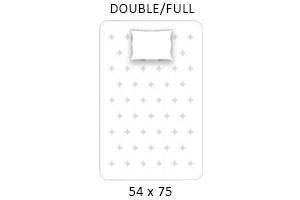
The Double or Full mattress is our first real foray into the land of couples mattresses. They’re the same length as a standard Twin mattress, but they provide a full 16 inches more in width. For many years the Double was the standard couples mattress. Now, not so much.
People tend to choose Double/Full mattresses based on the size of the room where it’s going. Some bedrooms, particularly in older homes or cramped city apartments, simply aren’t big enough to handle a Queen or King size mattress. So Double it is.
The Queen Mattress

With the Queen size mattress we enter into the land of luxury. Two average size people can easily fit on a Queen size mattress and still have some room to spread out. Due to the fact that newer homes have larger bedrooms, the Queen has become American’s #1 seller.
If you live and sleep alone you’ll find the Queen size mattress plenty large enough to accommodate even your most aggressive stretching out. The Queen size offers an extra 6 inches in length over the double, and are very common in modern hotels worldwide.
The King Mattress

It’s good to be king. It’s even better to have a King size mattress. About the only people who may not find a King size mattress large enough are basketball players and some of those ginormous NFL linemen. For everybody else they represent the wide open spaces.
Essentially, the King size mattress is the equivalent of putting 2 Twin XL mattresses side by side. And indeed you will sometimes find hotels that do just that, putting 2 Twin XL mattresses onto a King size frame. Because of the seam, however, the effect is just not the same. To really enjoy what the King has to offer you need one continuous mattress. But beware; the King can quickly swallow the available space in a bedroom.
The California King Mattress
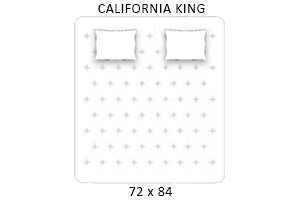
The California King was a late addition to the mattress lineup. There are several different origin stories for these mattresses, but the most widely accepted has it that they were developed in the 1960s for athletes, but quickly became popular with Hollywood celebrities.
The extra length makes sense for large athletes, but exactly why they lost a few inches in width to their standard King cousins has never been fully explained. Nevertheless, if you’re tall and like to spread out when you sleep, the California King is the mattress for you. If you have the space in your bedroom, of course.
So What Size Mattress do I Need?
To determine which of the above sizes is right for you (or if you need a custom size) ask yourself the following questions:
- How much do I weigh?
- Will I be sharing the mattress with someone else?
- If yes, how much is your combined weight?
- Do you like to stretch out when you sleep?
- What position do you typically sleep in?
- How big is your bedroom?
- How much are you prepared to spend?
If it’s just going to be you on the bed and you are of average size, a Twin or Twin XL (if you don’t move much when you sleep) or a Double/Full mattress (if you like to stretch out while you sleep) should be fine. If you’re sharing the bed with someone else some or all of the time, nothing smaller than a Double will realistically do. And if your bedroom and budget can accommodate something bigger, you should opt for that.
Now let’s look at the 3rd dimension of mattress sizing, the thickness, or height of the mattress.
Mattress Thickness
Most mattresses sold today are between 8 and 12 inches thick. There are some available as thick as 18 or even 20 inches, but you won’t find them at the local furniture store. There are a couple of things to keep in mind when choosing the thickness of your mattress.
The first is how much weight you anticipate bringing to bear on the mattress. This includes your weight, and the weight of anyone else who will be sharing the mattress with you. Mattress manufacturers tend to divide people into 3 weight groups:
Less than 130 pounds – People who weigh less than this are considered light. If they plan on sleeping alone most or all of the time an 8 inch thick mattress should suffice. If two people approximately this weight will be sharing the bed then you may want to consider a 10 inch thick mattress, or an 8 inch mattress that is pretty firm.
Between 130 and 230 pounds – The average American adult has gotten heavier in recent years. To the point now that the average adult female weighs just over 170 pounds and the average adult male weighs just shy of 200 pounds (1). That’s a significant increase from just 40 years ago (2). That said, anyone between 130 and 230 pounds today is considered average. One such person may be fine with a 10 inch thick mattress. But with 2 on the bed that mattress should probably be 12 inches thick.
More than 230 pounds – People who weigh more than this are considered heavy and should seriously consider a 12 inch thick mattress. If two such large individuals will be sharing the bed they may want to look for one of those harder-to-find 18 inch mattresses. The taller mattress will also likely make it easier for them to get in and out of the bed.
Other Thickness Considerations
Weight is not the only thing to consider when shopping for a thick mattress. Keep these things in mind as well.
Aesthetics – Mattress thickness affects more than your comfort level, it also impacts the way the bed sits in the frame and how it looks in relation to the rest of the room. If the mattress is too tall it may interfere with the headboard or the base. Or those elements may interfere with it.
Likewise, if the mattress sits too high the bed may look odd in relation to the nightstands, the bureau or other furniture. If you put a big fluffy duvet on it, the effect may be even more visually jarring. At the end of the day only you can say if such things matter to you. But they’re something to keep in mind before spending a lot of money on an extra thick mattress.
Price – A regular mattress doesn’t get thicker by pumping it up with air. It’s made thicker by adding more material and more layers. All that extra material costs the manufacturer money and they’re going to pass the cost on to the customer.
Weight – A mattress that is 18 or even 20 inches thick is going to weigh a lot. There’s no two ways about it. All the extra weight is going to make the mattress very difficult to move, whether you’re just moving the bed around the room, or you’re moving to another apartment or house. You may also have a hard time finding a headboard and base to accommodate it.
The Benefits of a Thick Mattress
Given that thicker mattresses are heavier, harder to move around, more expensive and can create problems with the way a bedroom looks, you might think it’s all bad news when it comes to mattresses 12 inches thick or thicker. But that’s not the case. Here are some of the benefits of a thick mattress.
Durability – A mattress that is 12 or 18 (or more) inches thick is going to be more durable than one that is 8 or 10 inches thick. This is especially true in cases where heavier individuals are involved.
Comfort – If you are on the heavy side chances are good you’re going to bottom out – or come close to bottoming out – on an 8 or 10 inch mattress, especially when laying on your side. That’s not going to happen on a 12 or 16 or 20 inch mattress. As a result you are going to have a more comfortable night’s sleep.
Easy access – Heavier individuals sometimes have difficulty getting up off of a low mattress. Having one that sits higher allows for a more natural motion from the bed to a standing position, and from a standing position to the bed. The same is often true for older individuals. They have enough problems getting a good night’s sleep as it is (3), the last thing they need is to have trouble getting in and out of bed.
Good for pregnant women – Women in the third trimester of their pregnancy often have difficulty getting comfortable in bed and getting in and out of bed as well. A thicker mattress provides a more comfortable platform for them to sleep on, and it makes it easier to get in and out of bed.
The Benefits of a Thin Mattress
Now let’s look at the benefits of having a thinner mattress.
Weight – An 8 inch thick mattress is going to weigh far less than a mattress that’s 12 inches thick, or even thicker. Moving it will be a (relative) breeze, and you’ll also find that making the bed is easier with a thin, lightweight mattress.
Lower to the ground – People of shorter stature will find it easier to get in and out of a bed if the mattress is thinner and lower to the ground. They will also find it easier to sit on the edge of the bed while getting dressed.
Affordability – Thicker mattresses contain more material that pushes up the price. Conversely, thinner mattresses are less expensive to manufacture and that is reflected in a lower retail price.
What Exactly is Inside a Mattress?
We all know that the thicker the mattress the heavier it’s going to be. But why is that? What is inside a mattress that makes it so heavy? The simple answer is “layers”. The average mattress is like a layer cake, with several layers piled on top of each other, each having a specific function. Let’s take a quick look at the layer structure of the average mattress.
The foundation layer – As is the case with a house, a good mattress is built on a good foundation. In most cases the foundation layer is anywhere from 4 to 6 inches thick, or about half the overall mattress thickness. This layer sets the tone for durability and support. The upper layers depend on the strength and firmness of the foundation layer they sit on. If the foundation layer is thin and squishy the comfort layers above will not be of much use, especially for heavier individuals. They will likely bottom out and the mattress as a whole will break down quickly.
The comfort layers – In most cases there are 2 kinds of so-called comfort layers: support layers and contour layers. Their job is to regulate temperature, provide additional support to bolster the foundation layer, and to isolate motion so that you’re not rocking back and forth every time you move. The number of comfort layers changes from manufacturer to manufacturer and also depends on the thickness of the mattress.
Support layers – The foundation layer establishes a basic level of support, while upper support layers add the finishing touches to the overall support picture. The role of these layers is to prevent unnatural curving of the spine while you sleep and to stop one part of the mattress from developing a sag.
Contour layers – To a large extent the firmness of the mattress is determined by the materials used in the upper contour layers, which may be fashioned from polyfoam, memory foam, a gel-infused foam or even latex. Big bulky coil springs are being used less frequently these days. Most manufacturers are replacing them with layers containing hundreds of micro-springs sandwiched between layers of foam.
Mattress Sizes: FAQs
Here are some of the most frequently asked questions we hear regarding mattress sizes.
How Do I Know If I Need a New Mattress?
There are any number of signs that will indicate that it’s time to consider getting a new mattress. For instance:
- You sleep better on hotel mattresses than your own mattress.
- You wake up achy, and/or feeling like you didn’t get enough sleep.
- The center of your mattress has begun to sag.
- You feel yourself bottoming out on your current mattress.
- You have put on or lost a significant amount of weight.
- Your mattress is more than 5 years old (4).
Why are There 2 Names for the Double/Full Mattress?
The mattress as we would recognize it has been around about 150 years (5). In that time different mattress designations emerged from different marketing departments. It’s unclear who used the term “Double” first, but it refers to the fact that you can fit 2 people on this type of mattress. Some other ambitious marketer designated this type of mattress the “Full size” mattress because, at the time they first rose to popularity, bedrooms were smaller than they are today and few could accommodate anything larger. For whatever reason, both names stuck.
What is the Most Popular Mattress Size Today?
These days the Queen size mattress is by far the most popular, at least in the US where homes are typically larger than in many other parts of the world. It wasn’t always this way, though. Right up until the mid-20th century the Double mattress was the most popular owing to the fact that even relatively large homes of the day were very compartmentalized with small rooms that were easier to keep warm.
Do Mattresses Have a Break-in Period?
In most cases, standard mattresses (not waterbeds or air mattresses) can take up to 30 days to adjust to your body. Sometimes longer. So don’t give up on your new mattress just because it doesn’t feel perfect the first time you sleep on it. Give it several weeks. It will likely come around.
Is the California King Really the Biggest Standard Mattress?
For all intents and purposes, yes. There are a few companies that produce larger ones, but their production numbers are small and some need to have an order in hand before they’ll produce one. Those larger mattresses include the “Alaska King” (6) which is a whopping 9 x 9 feet, and the “Wyoming King” which is a smaller but still impressive 7 x 7 feet. Compare those to the California King which is 72 x 84 inches, or 6 x 7 feet.
Will Standard Bedding Fit Every Mattress?
It’s usually easy to find sheets and comforters for all standard size mattresses. However, once you get into extra thick mattresses (over 12 inches thick), you’re going to find it difficult to get bedding to fit it. The same is true if you buy an Alaska King mattress, or even a California King for that matter. Fortunately, you’ll find numerous online outlets where you can get bedding for extra thick or extra large mattresses, including Amazon.
What if 2 People Have Different Ideas of Comfort?
If 2 people share a bed it can sometimes be tough to find a mattress that satisfies both. Fortunately, there is such a thing as a “Dual Comfort” mattress. The Dual Comfort mattress is essentially 2 mattresses joined together. Each side features different firmness and comfort settings.
There are a couple of potential drawbacks to these mattresses, however. First, you have to contend with the seam down the middle, and second, they tend to be more expensive than standard mattresses.
Where Can I Get a Custom Size Mattress?
Most mattress manufacturers will accept custom orders, but they will require you to pay in full in advance and there will be no chance of returning the mattress once it’s delivered. Because of that you need to know exactly what you want before you go ahead and order a custom mattress.
Where Can I Get a Mattress for My RV or Camper?
RV beds are rarely the same size as standard beds for the obvious reason that you need to save space in the RV. But there are still plenty of online outlets where you can pick up a mattress for your RV, including of course, Amazon.
Recent Posts
Everyone has trouble sleeping now and then. But some have more trouble than others. If you have been experiencing trouble falling or staying asleep it may be due to a health condition such as sleep...
When most people hear the word “hygiene” they think of things like making sure the bathroom is clean, washing your hands often, using disinfectants on frequently touched surfaces and even...